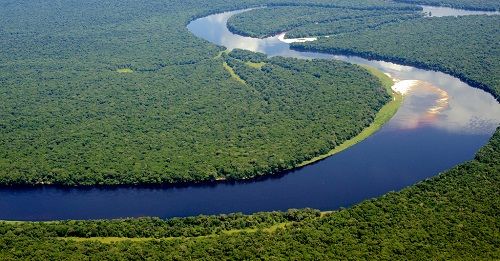Salonga National Park is located in the heart of the Congo River basin in the Democratic Republic of Congo. It is the world’s largest tropical rainforest national park and the largest in Africa, even larger than some countries, covering an area of 36,000 square kilometers.
Salonga national park was first established In 1933 as a nature reserve, then in 1956 as Tshaupa national park and later gained its boundaries with a presidential decree in1970 and became a world heritage site in 1984 but was, however, listed as a world heritage site in danger in 1998 as a result of civil wars and illegal poaching, the park was described by law as une reserve naturelle integrale in the sense of the 1993 London convention, the park is separated by a 40 kilometers settlement zone dividing the park into two parts: the northern and southern sectors.
Salonga national park is crossed by many rivers at the central basin of the Congo river, the park is situated in Africa’s untouched wilderness remoteness and can only be accessed by water or air transport but despite its remote state, it’s worth visiting this gem of Congo with diverse endangered species.
Salonga national park is characterized by Marsh swamps, rivers, plateau and rainforests. The north sector of the park is in the equator province and the south sector is in the Kasaï and Bandundu. The different landscapes of the park cover each their own unique distinct vegetation. The park received an annual rainfall of about 1,700 mm per year.
Poaching activities and civil wars have led to the decline of the park; however, the park is now regaining its natural state and has been divided into six sectors, with each sector having a ranger station and patrol posts, some of the parts of this park are completely virgin and have never been accessed by man. It’s also said to have 40% of the world’s Bonobo population.
Activities at Salonga national park
Wildlife viewing
The diversity of the salonga national park supports various wildlife, some of which are endemic to this area or the Congo basin examples of animals seen are the dwarf chimpanzee, Congo water civet, golden cat, giant ground pangolin, leopard, elephant, tree pangolin, duiker, Angolan mongoose, pygmy cape Buffalo, Sitatunga, bonobo, dwarf crocodile, wolf monkey, Okapi, red River hog, side-striped jackal, golden-bellied mangabey, red colobus monkey, black colobus monkey, Allen’s swamp monkey, potto monkey, mono monkey, white rhinoceros, dwarf bush baby, thollon red colobus and dryad monkey, among the rest.
Birdwatching
Birdwatching can also be done at the Salonga national park over 300 species have been recorded, and half of these birds are this areas residents some sbirds found at the park are the Congo peacock, black stork, cattle egret, yellow-billed stork, grey parrot, palm nut vulture, black-bellied bustard and many more.
Fishing
Apart from wildlife, those interested in aquatic life can go on a fishing safari at one of the Parks Rivers, travelers are advised to always come with their fishing gear to carry out this activity. The park is said to have over 400 species of fish.
Hunting
Tourists can explore more of the wilderness by going for a hunting experience Congo safari and this should be done with an armed game ranger guide.
Cultural experience
The park has got the native people of the iyalima people who have very unique ways of life and culture and are worth visiting and interacting with.
Nature-guided walks
How to get there
The park is located just 100 kilometers from South of Boende in between Kisangani and Kinshasa the park can be accessed by domestic charter flights from Monkoto, Anga and Mundja airstrips that fly directly to the park.
When to visit
The park is wet almost throughout the year but the best time to visit is in the drier months from June to August, when there are no floods and vegetation is not very thick, hence clearer views of wildlife.

Where to stay
Where to go on Saturday will vary according to the tourist’s choice or budget accommodation: tents, bandas and luxurious bandas.

